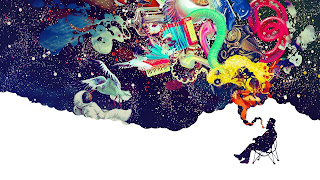 CONGRESSMAN GIRLYMAN: Mr. Mueller, thank you for appearing
before this congressional committee. We gather from William Barr’s summary of
your report that you didn’t find sufficient evidence to prove at trial that
President Trump had obstructed justice or that he conspired with Russia to get
him elected in 2016. Can you explain how you reached those conclusions?
CONGRESSMAN GIRLYMAN: Mr. Mueller, thank you for appearing
before this congressional committee. We gather from William Barr’s summary of
your report that you didn’t find sufficient evidence to prove at trial that
President Trump had obstructed justice or that he conspired with Russia to get
him elected in 2016. Can you explain how you reached those conclusions?
SPECIAL COUNSEL MUELLER: Well, it was an arduous process.
Nineteen lawyers and forty FBI agents. And for two years I had to ensure that they
all kept their thumbs up their asses. That’s day in and day out, mind you.
GIRLYMAN: I beg your pardon?
MUELLER: Exactly, it wasn’t as easy as you might suppose,
because I too had to show up for work with my thumb up my ass, all while overseeing
the team members with their thumbs up their asses. So for example—if you want
details—I’d arrive at the office bright and early, insert my thumb up my ass,
have a meeting with a few lawyers and we’d sit around with our thumbs up our
asses. On one occasion, Miss Legalese coughed and accidentally dislodged her
thumb. “Uh, uh, uh,” I told her. “Shove that thumb back up there. We have a duty
and the nation’s counting on us. So we’ve got to sit here in silence and strive
to keep our thumb up our ass for the entire day. No matter the cost!” She
apologized, of course, and swiftly returned her thumb to its station, because
she’s a fine lawyer.
GIRLYMAN: Mr. Mueller, I fail to see—I mean—what? What
exactly are you telling this committee? That for two years you and your team
did nothing but sit there with your thumbs up your asses?
MUELLER: That’s essentially correct. Luckily, I was able
mostly to stay seated, because I had cameras installed in the other offices and
I had screens brought in so I could confirm for the record that the agents and
lawyers did nothing but sit there with their thumbs up their asses. The system
broke down once or twice, and I had to leave my chair and rush over to the
other offices, all while keeping my thumb up my ass.
GIRLYMAN: That’s appalling, but I suppose that process does
explain your findings.
CONGRESSWOMAN SNOWFLAKE: I beg to differ—if you’ll pardon
the interruption. How did you get any work done for the American people if you
just sat there all day long doing nothing? How did you investigate these
important matters? The Russia connections, the threat to national security, the
corruption, the cover-up, the obstruction?
MUELLER: We didn’t address those matters, since the facts have
been out in the open. The pattern of lies about Russia, the Moscow development
project, Manafort’s ties to Russian oligarchs and his sharing of campaign polling
data with Russia, the Trump Tower meeting that was explicitly about Russia’s
attempt to help with the campaign, President Trump’s subsequent deference to
Putin and his pro-Russia realignment of American foreign policy—no further investigation
was required since Mr. Trump’s relationship with Russia is obvious, as is the danger
he poses to America’s national security. No, my team had to consider an
altogether different question.
SNOWFLAKE: Which is?
MUELLER: Do the
American people deserve four more years of Trump as president? That was the
only relevant question. And sitting there for two years with our thumbs up our
asses, watching the inane media coverage and the fallout from Trump’s election,
we decided that, yes, Americans deserve Trump. So we wrote our report as a gift
to the Republicans.
GIRLYMAN: Appalling. Just appalling.
MUELLER: Yes it is, isn’t it!
****
After Mr. Barr presented his interpretation of Robert
Mueller’s principal conclusions, Mr. Trump reiterated for the eleven-thousandth
time that there was no collusion.
“The radical Democrats said there was collusion,” shouted
the president at a press conference. “They called me a criminal mastermind. And
now the wonderful Mueller has completely exonerated me.”
A reporter then asked, “Isn’t it possible, Mr. President, you were never
competent enough to be a Russian agent, because you’re just a bumbling, senile,
childish, psychotic buffoon—which makes you the perfect useful idiot or stooge
of Putin?”

















